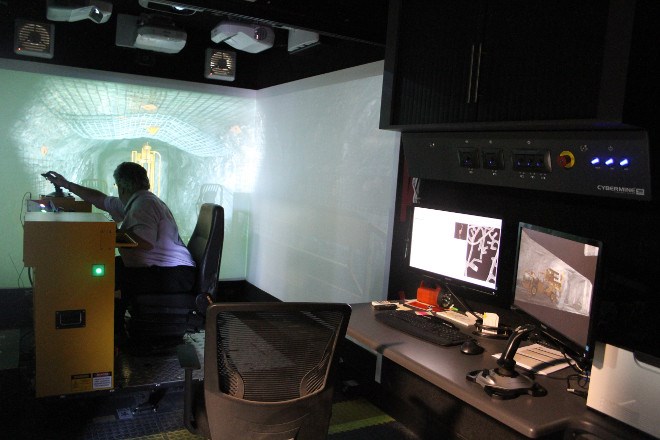With the Sudbury basin being a hub for mining technology, training people underground with real equipment would seem like a given.
That isn't always the case, but there is one place in the Sudbury basin with a unique distinction of being a training and testing mine.
NORCAT's Underground Centre gives entrepreneurs and tech companies a laboratory to test their equipment, while also giving students a place to do real-world training and test theories.
Mining simulators by ThoroughTec at NORCAT on Maley Drive are also part of the training program, giving students more experience in everything from driving machines to tackling extreme scenarios like machine fires.
Many students have gone into the mine as part of a special program made possible through a partnership with the Ontario Government and NORCAT, known as the Youth Bursary Program-NORCAT Training and Development.
One of those students in the program was Rebecca Hauta, who is pursuing her masters in mine engineering.
“It helped me articulate the development cycle because my master's was talking about the components of the development cycle, specifically putting in rock bolts,” she said.
“You get a feel for all the little details and little things you have to look at and how to do it properly, as well as how physically difficult it is.”
Working in the mine was exciting and eye-opening, she said.
By going underground, she developed a better appreciation for the details on how rock bolts should be placed and marked, as well as all the general safety rules.
Navita Ramdass, a mine engineering student at Laurentian University, was taking common core courses at NORCAT for her degree.
She said the combination of simulators and hands-on work at Onaping has given her a comprehensive set of skills and an understanding of how mining works.
“Actually being there and doing the work the miners do, it really makes you think about how to improve the conditions (with) the technology they are using. I think the foundation we got at that common core training is what was missing (in class) and I'm glad I got to do it.”
Using both the mine and the simulators helped, Ramdass said.
Underground, she learned how physically demanding mining is, as well as learning about all potential safety hazards around her.
In the simulators, she could run through emergency situations and machine crashes without actually endangering herself or others.
Hauta concurred. She trained in the simulator to learn how to drive a load, haul, dump machine (LHD).
“In the simulator, you go from crashing into a wall to driving perfectly straight and going around challenging corners,” she said. “You get used to it after a while.”
Hauta really really appreciated being taught by highly experienced instructors who worked in the mining industry and shared stories of their time.
Hauta currently works for the Ventilation and Production Optimization (VPO) group at MIRARCO, a Sudbury not-for-profit industry innovation group.
She conducts case studies for project sponsors to meet their specific mine planning needs using algorithms to generate high-value schedules and multiple schedule alternatives.
For Ramdass, it's invaluable for students like her to be underground.
"Just being there gives you that extra feel for the industry."
Ramdass has another year of studies. After that, she said he hopes to find a job in Canada.
“I'll go wherever the wind takes me, but I want to stay here."
The mandate of NORCAT Innovation Mill is to work with everyone from early-stage startups to large-scale tech companies to help them grow, create jobs and support the community, said NORCAT CEO Don Duval.
Part of that is the use of the Underground Centre, which he described as an "active laboratory" for companies to field test equipment and to serve as a training ground for skilled labour.
“What we have at Onaping is a very unique opportunity for students and the industry."
NORCAT has partnered with the Ontario government to develop a program to provide “experiential, hands-on training and development” for young people to get jobs in the industry.
Duval said there is a critical reason for this. As more miners retire, there will be a shortage of skilled labour in the mining industry in the near future.




